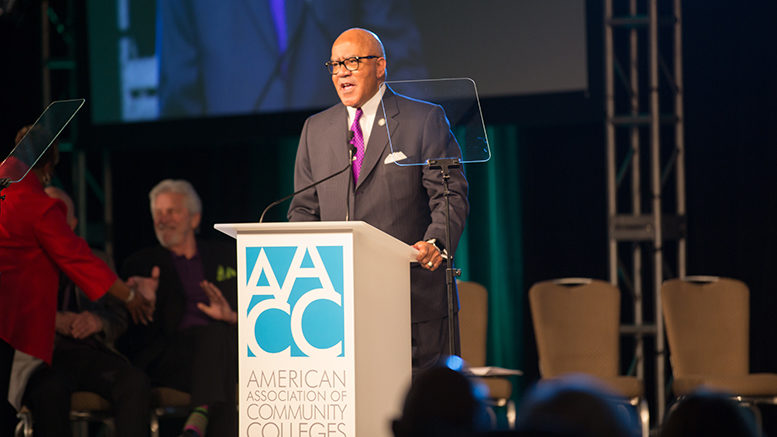In 1920, 34 junior college leaders gathered in St. Louis, Missouri, for a meeting called by U.S. Commissioner of Education Philander Claxton to discuss the role of two-year colleges. They represented 22 of the nation’s junior colleges. The junior college movement was still in its infancy, but this was a time when attendance at all higher education institutions was rapidly increasing.
The American Association of Community Colleges this year celebrates its 100th anniversary. This excerpt about its history comes from an article in the current issue of Community College Journal, the association’s flagship publication.
George Zook, a specialist in higher education with the Bureau of Education, who kicked off the meeting’s proceedings, said, “to my mind the time has come when we can say truthfully that the country has a real need for every kind of institution of learning in existence.”
Meeting participants discussed the issues that continue to be priorities today — access, workforce training, global competition, etc. They didn’t all agree on the role of junior colleges, but they did agree on the value of these colleges in meeting their community’s immediate needs.
During this conference, the American Association of Junior Colleges (AAJC) was conceived. The association was to function as a forum for the nation’s two-year colleges.
Article II of the constitution and bylaws stated that the object of the association “shall be to define the junior college by creating standards and curricula,” as well as to “study the junior college in all of its types … in order to make a genuine contribution to the work of education.”
As community colleges evolved, so did the association. AAJC Executive Secretary Jesse Bogue, who served the association from 1946 to 1958, popularized the term “community college” in his 1950 book, “The Community College.”
The 1960s was a time of explosive growth in the community college sector, and as more new community colleges were authorized, stakeholders turned to AAJC for help. During this time, the association was led by Edmund Gleazer. Through a partnership with the W.K. Kellogg Foundation, the association was able to expand its professional services to better help its growing membership.
In 1972, the association’s name was changed to the American Association of Community and Junior Colleges (AACJC), reflecting the community orientation of most public, two-year institutions.
The next decade brought greater acceptance and recognition of AACJC in the hierarchy of higher education. Under the leadership of Dale Parnell, it became a member of the Big Six higher education association and a significant member of the Washington Higher Education Secretariat.
AACJC also began looking ahead. In 1988, the association published “Building Communities: A Vision for a New Century,” a report that culminated 18 months of discussions and campus visits regarding the future of community colleges.
In 1992, during David Pierce’s tenure as president and CEO, the association’s name was simplified to the American Association of Community Colleges (AACC). It was also during the 1990s that AACC’s commissions were restructured and expanded to involve more people and help members better connect with the association.
In the new millennium, AACC gained more corporate and foundation support under the leadership of George Boggs. The association developed more leadership development initiatives. It also began working with the National Science Foundation on the Advanced Technological Education program.
Today’s AACC is helmed by President and CEO Walter Bumphus. It represents nearly 1,100 two-year, associate degree-granting institutions and 12 million students. In 2011, AACC launched the 21st-Century Commission on the Future of Community Colleges, which resulted in the 2012 report “Reclaiming the American Dream: Community Colleges and the Nation’s Future.”
Current initiatives include the AACC Pathways Project and AACC’s Unfinished Business initiative, which focuses on closing equity gaps.
AACC continues to be a forum for the nation’s community colleges and works to advance the collective interests of two-year institutions and the students they serve.

